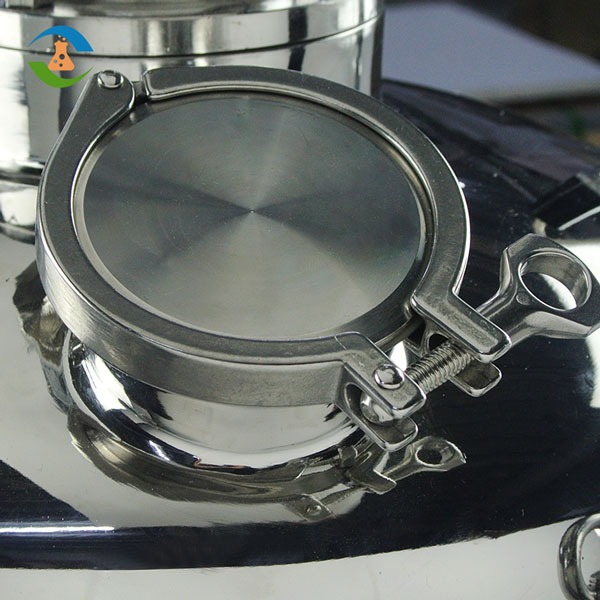Stainless steel reactors are widely used in various industries, including chemical, pharmaceutical, and food processing. These reactors play a crucial role in conducting chemical reactions, mixing ingredients, and producing a wide range of products. If you’re considering investing in a stainless steel reactor, it’s important to understand the factors that influence pricing and the applications where they excel. In this article, we will explore the price range of stainless steel reactors, delve into their applications, and provide a real-world case study to demonstrate their effectiveness.
Reactor Size and Capacity:
The size and capacity of the reactor directly impact its price. Larger reactors that can hold a greater volume of materials generally come at a higher cost due to the increased amount of stainless steel required for construction. Additionally, Stainless Steel Chemical Reactors may require more complex engineering and fabrication processes, which can contribute to higher prices.

FBL FBL Hot Sale Stainless Steel Reactor
Jacketed stainless steel reactor
- MODEL:SS-40L
- CAPACITY:40L
- MATERIAL:304 stainless steel
- POWER SUPPLY:110V/60hz
- STIRRING POWER:370w
- Price:$3,500.00 – $3,900.00(please consult for specific price)
Stainless steel chemical reactor
- MODEL:SS-60L
- CAPACITY: 60L
- MATERIAL:304 stainless steel
- POWER SUPPLY: 220V/50hz
- STIRRING POWER:370w
- Price:$3,500.00 – $3,900.00(please consult for specific price)
Decarb Reactor
- MODEL:SS-80L
- CAPACITY:80L
- MATERIAL:304 stainless steel
- POWER SUPPLY:240v/60hz
- STIRRING POWER:370w
- Price:$3,500.00 – $3,900.00(please consult for specific price)
Material of Construction:
Stainless steel reactors are typically constructed using different grades of stainless steel, such as 304, 316, or duplex stainless steel. The choice of material depends on the specific requirements of the application, including the nature of the chemicals being processed, temperature, and pressure conditions. Higher-grade stainless steel or exotic alloys may increase the price of the reactor due to their superior corrosion resistance and mechanical properties.
Stainless steel reactors usually use different grades of stainless steel materials, such as 304, 316, etc. High-quality stainless steel materials can improve the durability and service life of the reactor, but the price is correspondingly higher.
In addition, some reactors made of special materials, such as titanium alloy reactors, nickel alloy reactors, etc., will be more expensive. Reactors with higher prices are usually made of high-quality materials and advanced technology, and have higher technical content and quality.
Design and Customization:
The design and customization options of the reactor can affect its price. If you require specific features, such as specialized agitators, heating or cooling jackets, additional ports, or automation systems, the cost of the reactor may increase. Customization allows the reactor to be tailored to your specific process requirements, but it is important to carefully consider the extent of customization needed to avoid unnecessary costs.
Quality and Certification:
The quality and certifications of the reactor can impact its price. High-quality stainless steel reactors that meet industry standards and certifications, such as ASME, CE, or FDA guidelines, may come at a higher price. Investing in a certified reactor ensures safety, reliability, and compliance with industry regulations.


Additional Equipment and Accessories:
Consider any additional equipment and accessories that may be required for the reactor, such as pumps, valves, control systems, instrumentation, and safety devices. The inclusion of these components in the overall package can affect the price of the stainless steel reactor.




Is stainless steel reactor worth buying?
It’s worth it!
Because of its wide application.Stainless steel reactors find applications in a wide range of industries due to their durability, corrosion resistance, and versatility. Here are some key areas where stainless steel reactors excel:
Chemical Industry:
Stainless steel reactors play a vital role in chemical manufacturing processes, such as polymerization, hydrogenation, and synthesis of various chemicals. They are used for blending, mixing, and performing complex reactions under controlled conditions.

Pharmaceutical Industry:
In pharmaceutical manufacturing, stainless steel reactors are utilized for the production of active pharmaceutical ingredients (APIs), intermediates, and formulations. These reactors provide a sterile and controlled environment necessary for drug synthesis, purification, and isolation.

Food and Beverage Industry:
Stainless steel reactors are widely employed in the food and beverage industry for processes like fermentation, mixing, and flavor development. They are used in the production of beverages, dairy products, sauces, and condiments, ensuring sanitary and hygienic processing conditions.

Petrochemical Industry:
Stainless steel reactors are extensively utilized in the petrochemical industry for processes like refining, distillation, and catalytic reactions. Theyprovide a robust and corrosion-resistant vessel for handling aggressive chemicals and high-temperature reactions.

Environmental Applications:
Stainless steel reactors are also used in environmental applications, such as wastewater treatment and air pollution control. These reactors facilitate the removal of pollutants and contaminants through processes like oxidation, reduction, and neutralization.

Stainless steel reactors offer several advantages over glass reactors, making them a preferred choice for many industrial applications. Let’s explore the advantages of stainless steel reactors in comparison to glass reactors:
Durability and Robustness:
Stainless steel reactors are highly durable and robust, capable of withstanding high pressures and temperatures. The stainless steel construction provides excellent mechanical strength and resistance to impact, making them less susceptible to cracks, breakage, or other physical damage compared to glass reactors. This durability ensures a longer lifespan and reduces the risk of costly repairs or replacements.
Corrosion Resistance:
One of the key advantages of stainless steel reactors is their superior corrosion resistance. Stainless steel is resistant to a wide range of chemicals, including acids, alkalis, and organic compounds, making it suitable for handling corrosive substances in various industrial processes. In contrast, glass reactors can be susceptible to chemical attack, leading to potential degradation or breakage over time.
Temperature and Pressure:
Stainless steel reactors can withstand higher temperatures and pressures compared to glass reactors. They are designed to handle extreme process conditions, including high temperatures and pressures that may be required for certain chemical reactions. This capability allows for a wider range of applications and provides flexibility in process design and optimization.
Ease of Cleaning and Maintenance:
Stainless steel reactors are easier to clean and maintain compared to glass reactors. Stainless steel surfaces are smooth, non-porous, and resistant to staining, making them easier to clean and sterilize. They can be cleaned using a variety of methods, including steam cleaning, CIP (clean-in-place) systems, or manual cleaning with cleaning agents. In contrast, glass reactors may require more delicate cleaning procedures and can be prone to etching or scratching during cleaning processes.
Scalability and Customization:
Stainless steel reactors offer scalability and customization options to meet specific process requirements. They can be designed and manufactured in various sizes and capacities, allowing for easy scale-up or scale-down of production. Stainless steel reactors also provide flexibility in terms of customization, such as the inclusion of additional ports, specialized agitators, or heating/cooling jackets, to optimize process parameters and enhance performance.
The above is some useful information about stainless steel reactor price, if you want to know more about our products, please contact us.
